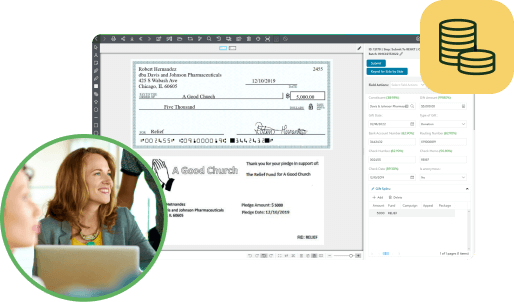
Wadih Pazos
Wadih founded both PairSoft and PaperSave. He is an avid technologist who specializes in streamlining operations and maximizing productivity.
View all posts by Wadih PazosWadih Pazos • July 31, 2014

Nonprofits need look no further than existing small company testimonials to see that going paperless is a viable process that ultimately pays off. Business blog Property Casualty 360 wrote a recent guide on how to deploy paperless document management in an office and cited the experience of Angelyn Treutel Zeringue, president of SouthGroup Insurance-Gulf Coast in Bay St. Louis, Mississippi.
“We went cold turkey and started migrating everything we touched into digital form and attached to our agency system. We did not go back and scan old files unless we needed them for the transaction,” Zeringue said. “We use front-end scanning. As paper mail comes in, it is converted to digital to be distributed… Because we have multiple offices, it is easier for us to share all of our documents electronically.”
Though putting these systems in place admittedly takes some time, it pays off – the company is functioning smoothly without any pesky inter-office mail that so often gets lost or travels sluggishly.
What is the cost of change? In the case of the paperless transition, it works in a business’ favor. To see this in action, tally up the annual maintenance costs of all the printers and copy machines used within your nonprofit, and the ink and other supplies it takes to fill them. Then, factor in the additional energy costs these machines consume, compounded with the added real estate needed to house any number of filing cabinets and other archived or stored documents. Put this number next to the amount it would take to implement a paperless solution and let the results speak for themselves.
Many paperless solutions allow document management software to integrate with applications businesses already use, making transactions and the workday move with more efficiency. For example, the Blackbaud app works well with a number of paperless systems, and the company’s blog wrote about the importance of going paperless in a recent blog post.
“Get your entire team involved in the process. Map out the “before” and “after” and get their input based on their specific job functions,” the post explained. “An important aspect in making successful changes is enabling participants in your new process to understand and easily adopt the new process.”
When a nonprofit goes paperless, everyone from the people in charge to the everyday patron can benefit from the increased efficiency and happier staff. For businesses looking to make a difference in their community, cutting paper out of the equation is the first step to improving day-to-day and overall customer satisfaction.
If not, talk to an expert today to see how our integrated gift and donor workflows can complement your Blackbaud setup.

